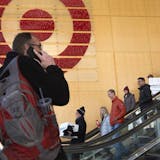Target started its slow phasing out of its private label Archer Farms in 2019 and created a new grocery brand called Good & Gather.
Yet the Minneapolis retailer still fields questions and complaints from customers about the longtime line's disappearance. That's how loyal Target brand enthusiasts are.
"I look forward to going and looking to see what I find at Target and telling people I got it from Target," said Maddy Kellum, 25, of Rush City. "When it comes to clothes, home decor, shoes, accessories, makeup, I'm at Target for that kind of thing and usually their brands."
Many consider Target's owned-brand strategy as the gold standard in retail. Other retailers' customers don't fuss or even notice a private label dissolution, often viewing it as a lower quality, discount option to higher-end national brands. But many of Target's private products have dedicated followings, with customers posting on numerous Pinterest boards, Instagrams and TikToks about #TargetMustHaves.
The huge retailer has grown a customer base of Targét lovers throughout the past 40 years, partly thanks to its ability to innovate and install its own brands focusing on everything from food to fashion.
Private or owned brands have become even more critical as consumers dealing with high inflation look for less expensive and longer-lasting items they still consider cool.
Target's brands, which make up a third of its merchandise, generated more than $30 billion in sales last year and grew faster than its overall sales.
Retail consultants and analysts say Target has an opportunity to snag even more market share this year, even as its growth has slowed from pandemic highs. Target spent much of 2022 trying to reset its inventory, offering big markdowns to rid itself of excess products.



